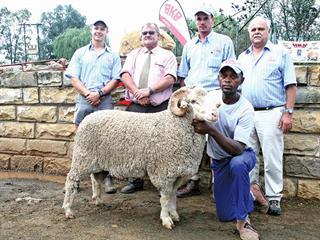Many farmers believe it is the end of the road for their cabbages once they find this disease in their lands. This is not the case, as you can make your soil inhospitable for the disease without in most cases affecting your cropping programme.
Clubroot is a small fungus that attacks the root system of plants of the mustard family and a few others, such as red clover and perennial ryegrass. Very susceptible crops include cabbage, Chinese cabbage and Brussels sprouts. Moderately crops include broccoli, cauliflower, kale, turnips and radish. Mildly susceptible are mustard, some turnips and rape.
Many weed species are also hosts. In some hosts the fungus does not produce root swellings, which are confined to species within the mustard family.
The disease is very easy to identify. first symptom is the wilting of plants in patches in the land during the heat of the day, often in moister sections. When the plant is lifted, the roots will be grossly swollen and misshapen. Infected young plants will die and older plants will be unproductive.
The disease can be devastating and spreads very rapidly. Initially, it is confined to patches which gradually grow larger, but if the infected land is replanted clubroot can take out the whole crop.
Clubroot is easily spread by mechanical means including shoes, implements and animals, but a particularly effective disseminator is water. I have seen how one contaminated farm’s runoff water infected all the vegetable farms below it which pumped out of the same river.
The fungus, Plasmodiophora brassicae, produces resting spores which are transported and spread the disease. These spores germinate to produce zoospores which use a small tail or flagellum to swim to root hairs where they enter and spread. The swollen roots later rot from soft secondary bacterial infection and many resting spores are released into the soil, completing the cycle. They can remain in the soil for 10 years or more without a host plant. he fungus requires warm, wet, acid soil.
Although there are chemical options to suppress the disease, the best course is usually to raise the pH of the soil to 7,2 or above. In one district visit, there are a number of farms in close proximity which have been in production for many years. The only farm which got clubroot was one that pumped from rain-fed dams. An application of sufficient lime solved the problem. others used boreholes, which raised the soil pH.
Get professional advice based on a soil sample to determine the amount of lime required. Initially, apply 1 500kg/ha of hydrated lime as well until the pH is stabilised at between 7,2 and 7,5. fungicide PCNB can also be used but this is a short-term solution. Raising the pH may cause scab problems with potatoes in rotation. – Bill Kerr Contact Bill Kerr on (016) 366 0616 or e-mail [email protected]. |fw









